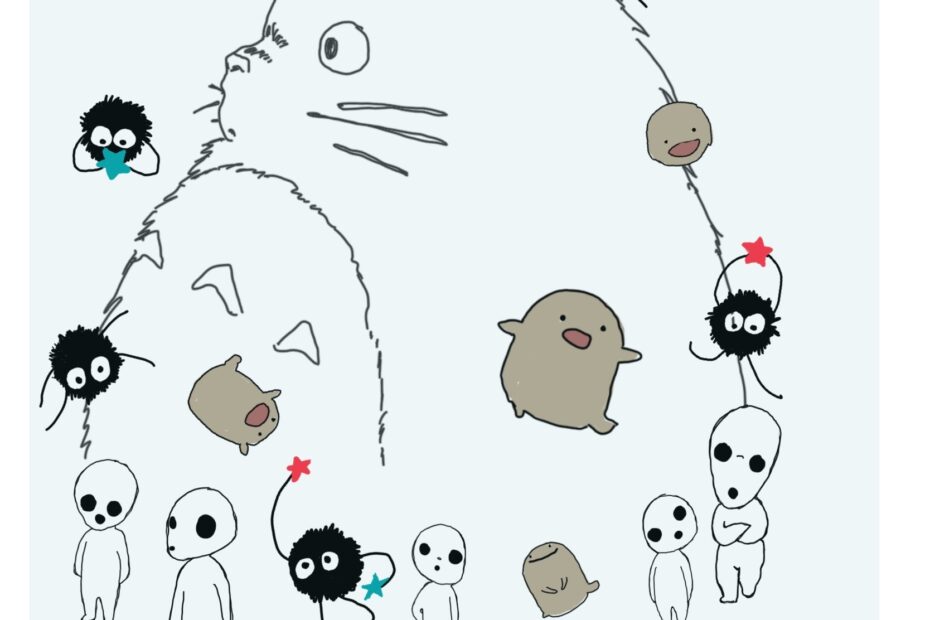Home means something different for everyone. Family, a sense of familiarity, and the formation of core memories are all common ideas when describing the concept of home. What threads these ideas together is often a sense of belonging – that home is where you are meant to be. It’s a place to return to, a place to rely on, a place of comfort. Home is a place, but not always in the conventional sense — it can be a childhood house, a mother’s embrace, or a touching song. It’s an ethereal quality attributed to a lived experience. This intangible state of being, and the nebulous nature of home, presents a challenge for artists. How can a piece of media appeal to its audience’s sense of home when that definition varies so wildly from person to person? The famed Japanese animation juggernaut Studio Ghibli has been searching for the answer to this question for decades. In my opinion, they have already found the answer.
Directors Hayao Miyazaki and Isao Takahata founded Studio Ghibli after the success of Miyazaki’s 1984 sophomore film, Nausicaä of the Valley of the Wind. Several salient stylistic choices and themes employed throughout the studio’s future works were introduced in Nausicaä. Core ideas include independent female protagonists, a fantastical aesthetic, and humanity’s relationship with nature. The clash between humanity’s technological progression and nature’s primordial influence, has been one of Miyazaki’s favourite ways to examine the idea of home. This conflict is explored heavily in both Nausicaä and Miyazaki’s 1997 environmentalist fantasy epic, Princess Mononoke, where humans must reconcile the natural home they have with the tech-forward home they want to build. In both films, industrial progression results in a resource-hungry conquest at the natural world’s expense. It could be said that the environment is the home we are provided, and industry is the ideal home we seek to construct.
Ghibli often frames humanity’s clash with the environment through its portrayals of war. Princess Mononoke, Nausicaä, and Howl’s Moving Castle (2004) are all defined by war’s inescapable nature. An unfortunate side effect of war is the destruction of homes — an idea encapsulated best by Isao Takahata’s tragic Grave of the Fireflies (1988). In this film, the young siblings Seita and Setsuko see war eviscerate their home in every imaginable capacity. Their house, hometown, and family are burned asunder by the wrath of America’s WWII firebombing campaign. The older brother Seita must build a new home for himself and his younger sister. Faced with hostility and misfortune at every turn, he tries to scrape together enough to provide for her. But war is merciless, and the young family of two can barely find enough food to survive. Seita’s home, once broad and multifaceted, has been concentrated into a burning desire to preserve his sister’s life. Grave of the Fireflies scrutinizes how we as a society doom the innocent through war, which in its essence, is nothing more than the brutal destruction of countless homes.
Grave of the Fireflies premiered alongside Miyazaki’s whimsical My Neighbour Totoro (1988) in an infamously conflicting double feature. Like Grave of the Fireflies, Totoro explores how definitions of home can quickly change. This film follows young sisters Satsuki and Mei after they move to a country house near the hospital where their mother is undergoing treatment. Their mother’s removal from the household, combined with a complete change of scenery, forces the girls to redefine their concept of home. This process is portrayed through a fantastical exploration of nature and imagination. The rustling of trees in the wind, a verdant tunnel through the bushes, and magical soot sprites in the attic help the girls transform their environment into a new home. This culminates in the introduction of the eponymous Totoro, a jolly spirit of the forest who shows the girls mysterious, supernatural wonders in the nature surrounding them. Whether a real or imaginary friend, Totoro’s presence represents a childlike wonder that can turn any foreign place into a home.
Explorations of home are omnipresent in Ghibli’s oeuvre, from Chihiro’s odyssey to the real world in Spirited Away (2001) to young witch Kiki’s search for meaning in Kiki’s Delivery Service (1989). But this examination would be incomplete without Miyazaki’s latest (and possibly final) work, released just last year: The Boy and the Heron (2023). This film is perhaps Miyazaki and Ghibli’s most ambitious project yet, prodding at life’s purpose, from birth to death to whatever lies beyond. In fact, the original Japanese title How Do You Live? may be a more apt signifier of what lies at the core of this film. This psychedelic jumble of fantastical whimsy and human pain encompasses every theme discussed so far. The Boy and the Heron knows war. It knows grief. It knows wonder, family, love, and deep within its core, it knows home.
Buried within its boundless oceans, its blazes of war, and its effervescent spirits is a boy who wants to know what “home” is for himself. After losing his mother in a fire, Mahito moves with his father to the country and follows a heron to an alternate world. There he meets an old wizard, the world’s proprietor and eternal denizen, who has built this world as a home for himself. He tasks Mahito with continuing its maintenance, as his lifetime will soon end. It is ultimately up to Mahito to decide if this world can be his home. I see this as Ghibli’s way of answering a question with another question, appropriately idiosyncratic for Miyazaki’s potential swan song. How does an artist appeal to an audience’s infinitely variable sense of home? According to the mind of Miyazaki, simply ask them to figure it out for themselves.

